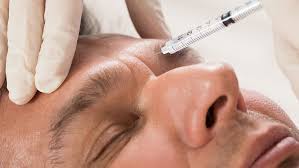How often should you get Botox injections?” is a key question for anyone considering or currently receiving this popular cosmetic treatment. Botox Injections(حقن البوتوكس) has revolutionized the approach to reducing wrinkles and fine lines, offering a minimally invasive solution for maintaining a youthful appearance. Knowing the ideal frequency of treatments is essential to maximize results, maintain skin health, and avoid potential side effects. This article explores the typical Botox schedule, why timing matters, benefits, risks, and answers common questions related to treatment frequency.
The Importance of Scheduling Botox Injections Properly:
Understanding how often Botox injections should be administered is crucial for sustaining their effectiveness. Botox works by temporarily relaxing facial muscles responsible for dynamic wrinkles, but its effects are not permanent. Over time, muscle activity returns, and wrinkles gradually reappear. Scheduling treatments at appropriate intervals ensures continuous wrinkle control without overuse. Proper timing also helps prevent muscle resistance, potential side effects, and allows for natural facial expression maintenance, making it an important factor in treatment success.
Typical Botox Injection Frequency:
- Every 3 to 4 Months: Most people require Botox injections roughly every three to four months to maintain optimal wrinkle reduction.
- Initial Treatments May Need Closer Follow-Up: The first few sessions often require more frequent appointments to assess muscle response and adjust dosage.
- Maintenance After Several Sessions: Once muscles respond well, treatment intervals may extend up to six months depending on individual factors.
- Variation Based on Treatment Area: Some areas, like the forehead, may need more frequent treatment than others due to muscle activity.
- Lifestyle and Metabolism Influence Timing: Active metabolism or frequent facial movements can shorten the duration of Botox effects.
This schedule balances effectiveness with safety and natural results.
Benefits of Regular Botox Treatments:
- Consistent Wrinkle Reduction: Timely treatments prevent the return of dynamic wrinkles and fine lines.
- Prevention of Deeper Wrinkles: Regular muscle relaxation helps delay the formation of permanent creases.
- Customization Over Time: Repeated sessions allow adjustments tailored to changing skin and muscle needs.
- Maintains Natural Facial Expressions: Proper spacing avoids over-treatment that can cause stiffness or frozen looks.
- Boosts Confidence: Ongoing improvement in appearance supports self-esteem and well-being.
Routine Botox ensures long-term benefits with minimal interruption to daily life.
Risks and Considerations of Treatment Frequency:
While Botox Injections treatment(علاج حقن البوتوكس) is generally safe, inappropriate frequency can lead to issues:
- Overuse: Excessively frequent injections may cause muscle atrophy or resistance to Botox, reducing effectiveness.
- Under-treatment: Waiting too long can allow wrinkles to deepen, requiring higher doses later.
- Side Effects: More frequent treatments may increase risks of bruising, swelling, or muscle weakness.
- Cost and Commitment: Regular sessions require ongoing investment of time and resources.
- Individual Variation: Some may metabolize Botox faster or slower, affecting ideal timing.
Consultation and monitoring help tailor frequency to personal needs and minimize risks.
Frequently Asked Questions (FAQs):
Can I extend the time between Botox sessions?
Yes, some individuals find results lasting longer, but extended gaps may reduce wrinkle control.
What happens if I get Botox too often?
Overuse can cause muscle weakening or decreased response, possibly leading to less effective results.
Is it safe to get Botox more than twice a year?
Yes, as long as treatments are spaced properly (every 3-4 months), multiple sessions per year are safe.
How do I know when it’s time for another Botox treatment?
Return of visible wrinkles or muscle movement signals the need for a touch-up.
Can lifestyle affect how often I need Botox?
Yes, factors like sun exposure, smoking, and facial expressions can influence Botox longevity.
Conclusion:
“How often should you get Botox injections?” depends on individual factors but generally falls between every three to four months to maintain smooth, youthful skin. Proper scheduling maximizes the benefits of wrinkle reduction while minimizing risks such as muscle resistance or side effects. Regular treatments offer consistent improvement, prevent deeper lines, and help maintain natural expressions that boost confidence. Understanding the importance of timing, along with risks and benefits, equips individuals to manage their Botox journey effectively. With personalized planning, Botox remains a safe and effective tool for long-lasting skin rejuvenation.

